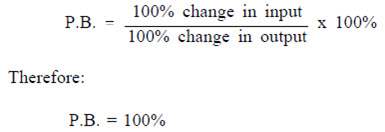There is a high demand for qualified Automatic Control Systems Engineers in industry. Say that there is no automatic control, then there will be no heating or air-conditioning in the way that we have become used to; whereas certain temperature and humidity levels are maintained. Refrigerators and stoves would not be able to regulate their operation. Automatic control systems can also be found industrially in numerous applications, such as quality control of manufactured parts, automation, machine tool control, space technology, computer systems, and robotics. A thorough understanding of the basics is a great place to start.
Automatic control compares desired output to a setpoint and adjusts to meet the desired output. One of the fundamental types of control systems is proportional control, which can control speed, temperature, level, or pressure in a controlled band of setpoints.
Proportional control is also referred to as throttling control.
Control Mode
In the proportional control mode, the final control element is throttled to various positions that are dependent on the process system conditions. For example, a proportional controller provides a linear, stepless output that can position a valve at intermediate positions, as well as “full open” or “full shut.” The controller operates within a band that is between the 0% output point and the 100% output point, and where the output of the controller is proportional to the input signal.
Proportional Band
With proportional control, the final control element has a definite position for each value of the measured variable. In other words, the output has a linear relationship with the input. Proportional band is the change in input required to produce a full range of change in the output due to the proportional control action. Or simply, it is the percent change of the input signal required to change the output signal from 0% to 100%.
The proportional band determines the range of output values from the controller that operate the final control element. The final control element acts on the manipulated variable to determine the value of the controlled variable. The controlled variable is maintained within a specified band of control points around a setpoint.
To demonstrate, let’s look at Figure 1.

Figure 1 Proportional System Controller
In this example of a proportional level control system, the flow of supply water into the tank is controlled to maintain the tank water level within prescribed limits. The demand of disturbances, placed on the process system, are such that the actual flowrates cannot be predicted. Therefore, the system is designed to control tank level within a narrow band in order to minimize the chance of a large demand disturbance causing overflow or runout. A fulcrum and lever assembly is used as the proportional controller. A float chamber is the level measuring element, and a 4-in stroke valve is the final control element. The fulcrum point is set such that a level change of 4-in causes a full 4-in stroke of the valve. Therefore, a 100% change in the controller output equals 4-in.
The proportional band is the input band over which the controller provides a proportional output and is defined as follows:
![]()
For this example, the fulcrum point is such that a full 4-in change in float height causes a full 4-in stroke of the valve.

The controller has a proportional band of 100%, which means the input must change 100% to cause a 100% change in the output of the controller.
If the fulcrum setting was changed so that a level change of 2 in, or 50% of the input, causes the full 4-in stroke, or 100% of the output, the proportional band would become 50%. The proportional band of a proportional controller is important because it determines the range of outputs for given inputs.
For more information on reading process diagrams, sign up for our online training at www.myodesie.com or contact us at sales@techtransfer.com for a class at your facility.

